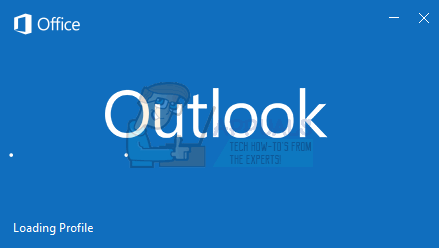Fix: Outlook Stopped Working After Windows 10 Update
Emails are an important part of our lives and if you find even a small problem with them, your entire world comes down. Imagine yourself not being able to send an email or not syncing your account for multiple days, just because you upgraded your system! Frustrating, isn’t it?
With the latest Windows 10 upgrade rolled in, there is a pool of problems for the users that somehow remain unsolved. One such problem is nonfunctioning of Outlook which includes crashing after a Windows 10 Upgrade. If you are also stuck in this situation then perform the following steps.

Method 1: Disable the Add-ins
- To resolve this issue, it is suggested to launch Outlook in safe mode pressing the Windows + R key. It will open the Run box.
- In the Run box, type the following command and hit OK:
Outlook.exe /safe
- In case you are able to work with Outlook in Safe mode, the next step is to disable the Add-ins. Follow these steps to do so:
- Go to File > Option > Add-ins
- From Manage: COM Add-ins, select Go Button. Clear the Add-ins checkbox to disable it.
Method 2: Change File Permissions
Another reason for the occurrence of this problem is the corruption of data due to the upgrade. The error might inform you that it cannot open the files because it did not have any permission yet.
- Open your folder on the desktop and then open Documents.
- Now open the Outlook files to check for the security permissions for them.
- You will find a .pst file for your email accounts.
- If Home User permission is removed, then allow them. Restart your computer and hopefully, now your account will work fine.
Method 3: Open Outlook in Safe Mode
- Launch your Outlook app in a safe mode. In order to do this, you just need to press the Windows + R Key. Run box will open.
- In the run, type Outlook.exe /safe and press Enter. Now you can work in a safe mode.
- You also need to disable the add-ins. To disable them, click on the File Menu and go to Options.
- Click on Add-ins.
- Click on “Go” in the “Manage COM Ad ins”. Clear the checkboxes and you are done.
Method 4: Clean Installation of Windows
If your system checker is unable to find the error files then you can also try performing a clean installation of Windows. Before doing that, ensure proper backup of your data and important files so that they are not deleted during the process. You can try reinstalling outlook in case none of the above solutions work for you.
Method 5: Reverting back to a Previous Version (Latest Fix- 16th July 2020)
Another workaround that we found for both cases of Outlook not working (including crashing and not initializing) was to revert to a previous build. If the current version isn’t working for you, then reverting to a previous version will definitely do the trick.
The twist here is to find the latest stable Outlook version that you can revert back to. You can check third-party websites like Slipstick Outlook version History or Office 365 official version history. Once you identify the version number, you can use the command prompt beneath to revert back to it.
- Right-click on the Windows icon and open the Command prompt as an administrator.
- Now run the following command to navigate to the required directory:
cd “c:\Program Files\Common Files\microsoft shared\ClickToRun"
- Now that we are in the directory, use the following command to revert to the stable version. Replace the version number written after ‘updatetoversion=‘ to the correct version. As of 16th July 2020 when Outlook started to crash after an update, this version was the most stable one available.
officec2rclient.exe /update user updatetoversion=16.0.12827.2047

Make sure to restart your computer completely before opening Outlook again. You might be required to enter your credentials again but other than that, you are good to go.